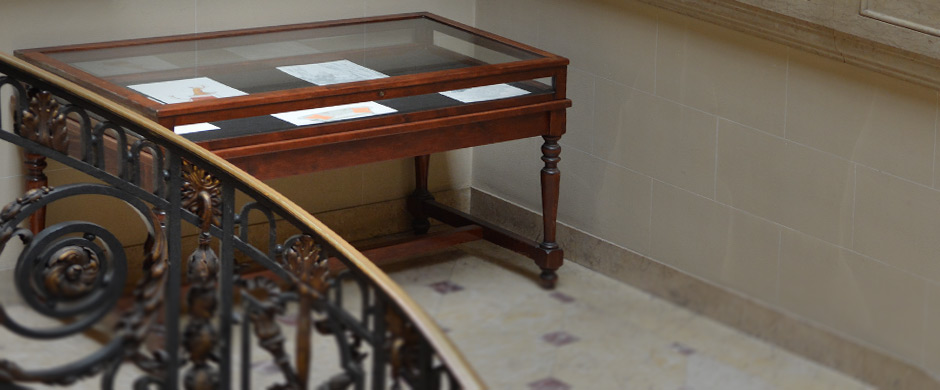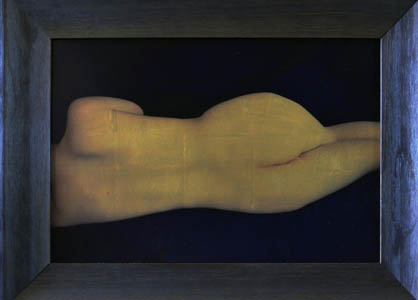 | On Display
| On Display

Display Cases in the Great Hall: Exhibition Archive
LIGHT OF THE MOON
23 May to 16 July 2018
Nudes and Orotones by KATE BREAKEY
 Orotone photographs are printed on glass, made by a process that lends extraordinary subtlety, suffusing the image with warm golden light, as if aged over time. This selection from Kate Breakey’s Golden Stardust series are orotones made by burnishing and adhering 24 karat gold leaf to the verso of a glass plate, on which an image has been digitally printed.
Orotone photographs are printed on glass, made by a process that lends extraordinary subtlety, suffusing the image with warm golden light, as if aged over time. This selection from Kate Breakey’s Golden Stardust series are orotones made by burnishing and adhering 24 karat gold leaf to the verso of a glass plate, on which an image has been digitally printed.
Early practitioners of orotone photography include Edward S. Curtis, who used the method to print portraits of Native Americans in the early twentieth century, funded by J.P. Morgan. The method flourished from the late 19th century to the beginning of World War II, but is now used by contemporary photographers to add nuance and reclaim a delicate process in new work. Breakey, a native of arid South Australia, lives and works in the deserts of Arizona, where the orotone medium suits the light. Her inspiration is nature, as she says, “brimming with fantastic mysterious beautiful things.”
Breakey’s studies of the Moon setting over Saguaro and over Safford Peak in Arizona reflect her daily engagement with the desert. The Saguaro cactus grows only in the Sonora desert in Arizona, where they are venerated as mysterious anthropomorphic beings recognized by Native Americans. Her Total Solar Eclipse over Nebraska (2017) captures another mesmerizing facet of celestial phenomena, revealing the penumbra in the moment. Her compelling nudes, edited to remove identity, allude to classic studies by French painter Jean Auguste Dominique Ingres: Grand Odalisque, 1814 and the Valpinçon Bather, 1808 (both Louvre, Paris). Golden tones add painterly depth and life to Breakey’s photographs, making them universal images of venerated forms: voluptuous female figures, the Moon and Sun.
Contact the Institute
Building Hours
Contact Information
If you wish to receive information on our upcoming events, please subscribe to our mailing list.



